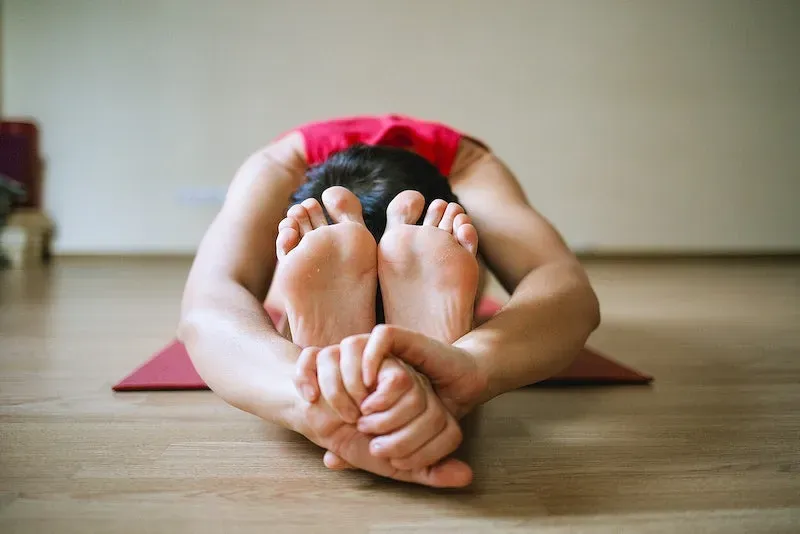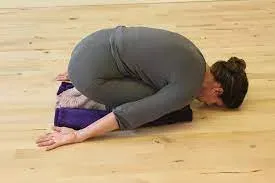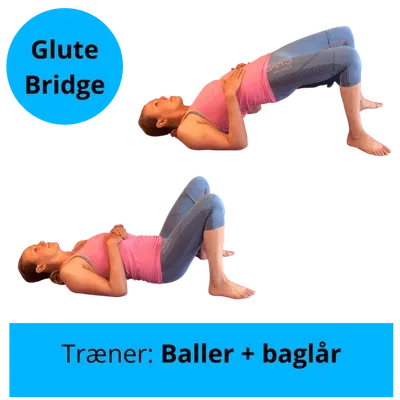Soothe Your Sciatic Pain With These Simple Exercises
Table of Contents
Understanding Sciatica
- What is the Sciatic Nerve?
- What Triggers Sciatic Nerve Pain?
Exercises to Relieve Sciatic Pain
- Effective Exercises for Sciatica
- Exercise 1: Seated Spinal Twist
- Exercise 2: Hamstring Stretch
- Exercise 3: Pelvic Tilt
- Exercise 4: Bird Dog
- Exercise 5: Child's Pose
- Exercise 6: Glute Bridges
The Benefits of Exercise for Sciatica
Conclusion
Understanding Sciatica
Sciatic pain can be a debilitating condition that can affect your daily life. Fortunately, some exercises can help manage and relieve the pain.
In this article, we will outline six exercises that can help reduce sciatic pain.
What is the Sciatic Nerve?
The sciatic nerve is the longest in the human body, running from the lower back down to the legs and feet.
What Triggers Sciatic Nerve Pain?
Sciatic nerve pain, or sciatica, can be caused by many factors, including:
-The use of certain medications
-The condition of the sciatic nerve itself
-Trauma to the sciatic nerve
The discs in the spine can become damaged and bulge or herniate. When pressure is put on the sciatic nerve, it can cause pain.
Spinal stenosis is a narrowing of the spinal canal. This can cause compression of the sciatic nerve.
As the discs in the spine age, they can become less flexible. And more prone to damage, leading to sciatic pain.
This is a condition in which one vertebra slips out of place and presses against the sciatic nerve.
The piriformis muscle in the buttocks can become inflamed or tight. Putting pressure on the sciatic nerve can cause pain.
A fall or car accident can injure the sciatic nerve, causing pain.
Poor posture can cause pressure on the sciatic nerve. Obesity can put pressure on the spine, leading to sciatic pain. Diabetes can damage the nerves in the body. This includes the sciatic nerve.
Pregnancy can put pressure on the sciatic nerve, causing pain in some women.
Target audience:
This article is for people who are experiencing sciatic pain and are interested in exercises that can help relieve it.
Introduction
Sciatic pain is a type of pain that originates in the lower back and spreads down the leg. It can be incredibly painful and is often felt in the lower back or buttocks.
Exercise can help reduce sciatic pain. In this article, we will outline six exercises that can help reduce sciatic pain.
What are The Best Exercises For Sciatica
Some effective stretching exercises for sciatica include the knee-to-chest stretch, the seated piriformis stretch, the standing hamstring stretch, and the reclining pigeon pose.
Some strengthening exercises that can help ease sciatic pain include wall sits, bridges, pelvic tilt exercises, and leg raises.
Exercise 1: Seated Spinal Twist
The seated spinal twist is a great exercise for relieving sciatic pain. To perform the exercise, sit on the floor with your legs crossed and your spine straight.
Place your right hand on your left knee and your left hand behind you.
Twist your torso to the left and hold the position for 30 seconds. Then return to the starting position and repeat on the other side.

This exercise can help reduce sciatic pain.
If you're just starting, it's important to use a cushion to support your back and focus on your breath.
Exercise 2: Hamstring Stretch
The hamstring stretch is another great exercise for relieving sciatic pain. To perform the exercise, sit on the floor with your legs out in front of you and hold onto a sturdy post or chair.
Hold the towel in your left hand and place it around the sole of your foot.
Gently pull the towel toward you until you feel a stretch in your hamstring.

Hold the position for 30 seconds and repeat on the other side.
This exercise can help to improve flexibility and circulation, which can help to reduce sciatic pain.
Beginners' tips include using a cushion for support and focusing on your breath.
Exercise 3: Pelvic Tilt
The pelvic tilt is a great exercise to relieve sciatic pain. To do the exercise, lie on your back with your knees bent and your feet flat on the floor.
Place your hands on your hips and tilt your pelvis toward the ground. Hold the position for 30 seconds, and then return to the starting position.
This exercise can help reduce sciatic pain. It also makes you more flexible and improves your posture. This can help reduce the pain from your sciatic nerve.
If you're just starting, it's important to use a cushion to support your back and focus on your breath.
Exercise 4: Bird Dog
The bird dog is a great way to relieve sciatic pain. To do the exercise, start on your hands and knees.
Extend your right arm forward and your left leg back, keeping your core engaged and your back flat.

Stay in this position for 30 seconds, and then repeat on the other side. The benefits of this exercise include improved balance and increased strength, both of which can help reduce sciatic pain.
If you're just starting, it's important to use a cushion to support your back and focus on your breath.
Exercise 5: Child's Pose
The child's pose can help relieve sciatic pain. To do the pose, start on your hands and knees.
Lower your hips to the ground and stretch your arms out in front of you. Hold the position for 30 seconds, and then return to the starting position.

This exercise can help improve posture and flexibility, which can help reduce sciatic pain.
If you're just starting, it's important to use a cushion to support your back and focus on your breath.
Exercise 6: Glute Bridges
The glute bridge is a great exercise for relieving sciatic pain. To perform the exercise, lie on your back with your knees bent and your feet flat on the floor.
Hold the position for 30 seconds, and then lift your hips off the floor.
The benefits of this exercise include increased strength and improved balance. These can help reduce sciatic pain.

If you're just starting, it's important to use a cushion to support your back and focus on your breath.
Conclusion
Exercise can help relieve sciatic pain.
In this article, we outlined six exercises that can help reduce sciatic pain, including the seated spinal twist, hamstring stretch, and pelvic tilt. Bird dog, child's pose, and glute bridges.
There are many exercises for beginners to follow, so be sure to follow the instructions carefully.
Some of the benefits of these exercises include better breathing, increased strength and endurance, and improved mental clarity.
By practising these exercises regularly, you can reduce your sciatic pain and improve your overall health.
Try Sciatica Pain Relief Stretches For Legs And Hips
Frequently Asked Questions
Q: What is sciatic pain, and what causes it?
A: Sciatic pain is a type of pain that is caused by compression or irritation of the sciatic nerve, which runs from the lower back down to the legs.
This pain can be caused by a variety of factors, including herniated discs, spinal stenosis, degenerative disc disease, and other conditions that put pressure on the sciatic nerve.
Q: What are some common symptoms of sciatic pain?
A: Some common symptoms of sciatic pain include pain that radiates from the lower back down to the legs, numbness or tingling in the legs or feet, weakness in the legs or feet, and difficulty sitting or standing for prolonged periods.
Q: What are some exercises that can help alleviate sciatic pain?
A: Several exercises can help alleviate sciatic pain, including gentle stretches, strengthening exercises, and low-impact aerobic exercises like walking or swimming.
Some examples of exercises that may help include knee-to-chest stretches, pelvic tilts, hamstring stretches, and bridges.
Q: Are there any exercises that should be avoided if you have sciatic pain?
A: It's important to avoid exercises that put excessive strain on the lower back or legs, as these can exacerbate sciatic pain.
Some exercises to avoid include heavy lifting, high-impact activities like running or jumping, and exercises that involve twisting or bending at the waist.
Q: How often should I do these exercises to see results?
A: It's important to be consistent with your exercise routine to see results. Aim to do these exercises at least 3–4 times per week, and gradually increase the frequency and intensity as your pain improves.
Q: Should I consult with a healthcare professional before starting these exercises?
A: If you are experiencing severe or chronic sciatic pain, it's always a good idea to consult with a healthcare professional before starting any exercise routine.
They can help determine the underlying cause of your pain and provide recommendations for exercises that are safe and effective for your specific needs.
Recommended Products
- Heating pads/cold packs: Apply heat to increase blood flow and promote healing, or cold to reduce inflammation.
- Foam rollers: Promote self-massage and target tight muscles that can contribute to sciatic pain.
- Lumbar support cushions: Improve posture and reduce pressure on the lower back while sitting.
- Supportive shoes with good arch support: Proper footwear can significantly impact how your body distributes weight and reduce stress on the sciatica nerve.
Stretching/exercise aids:
- Resistance bands: Can be used to add gentle resistance to the exercises in the article, increasing their effectiveness over time.
- Yoga mats: Provide a comfortable and supportive surface for performing the exercises.
- Massage balls: Similar to foam rollers, but smaller and more targeted for pinpoint trigger point release.
Disclaimer: Remember to consult with a healthcare professional before using any new products or starting an exercise program, especially if you have a diagnosed medical condition.

